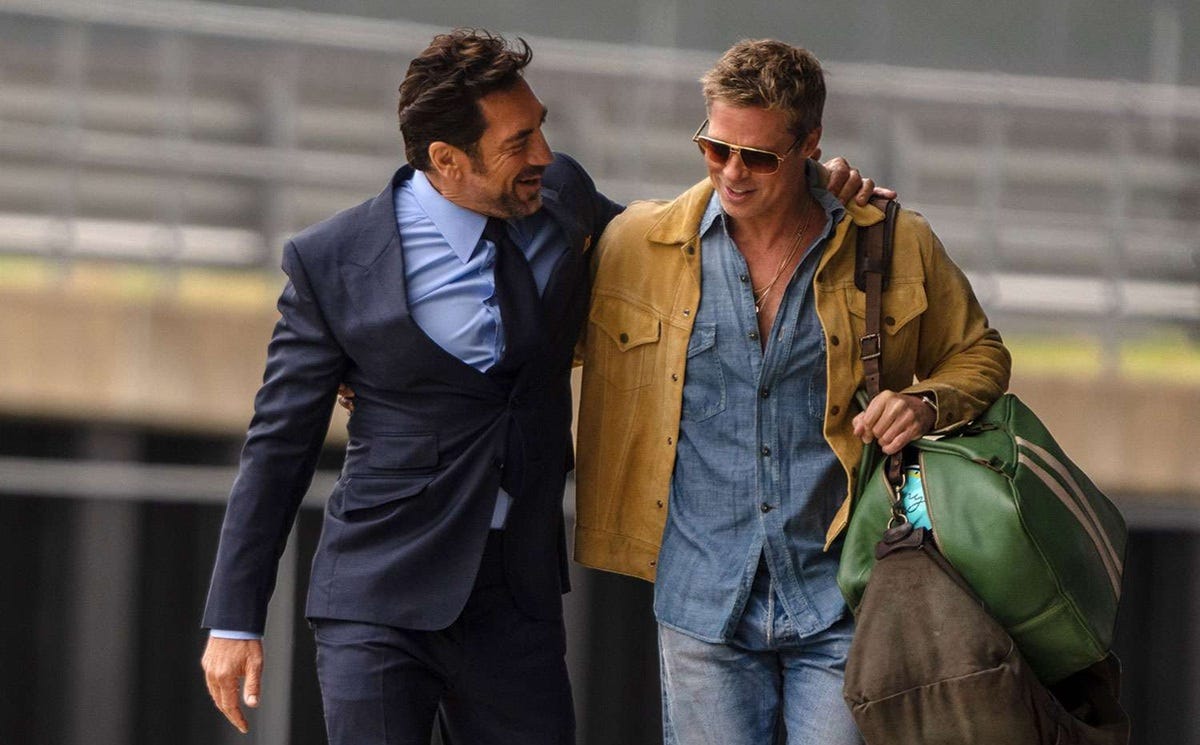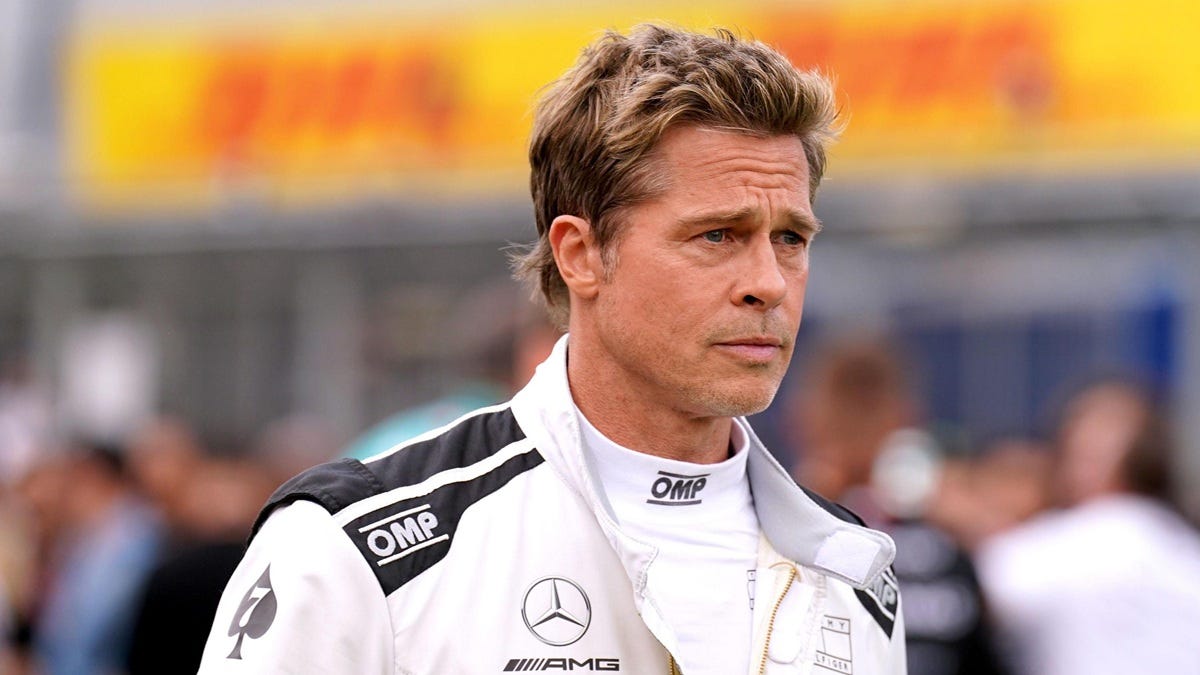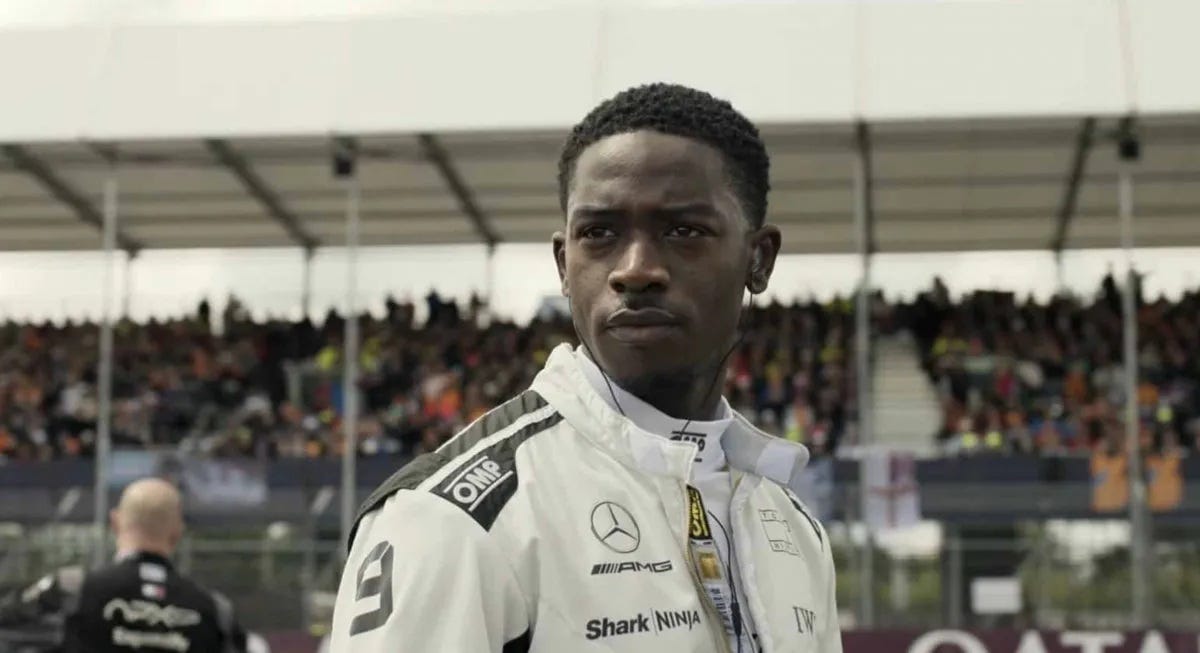‘F1’ Review: Brad Pitt Races Toward Glory in a Film That Goes Fast—But Not Deep
Joseph Kosinski’s Formula One drama is a sleek, adrenalized spectacle that never quite finds the finish line emotionally—but for two-plus hours, it sure knows how to move.
In the past five years, only a handful of movies have really earned the label “blockbuster” in spirit, not just budget. Top Gun: Maverick is one of those rare exceptions—a film that understood the cinematic thrill of movement, speed, and emotional momentum. So when director Joseph Kosinski returned with F1, his latest ode to speed, the question wasn’t whether it would look good. Of course it would. The real question was whether it would make you feel anything.
The result is a mixed bag, albeit one lined with chrome. F1 is loud, shiny, and flush with well-executed spectacle. It delivers exactly what a big summer movie promises: adrenaline, volume, and movie stars in motion. But once the final lap is done and the cars stop spinning, there isn’t a whole lot left to hold onto. This is a high-gloss thrill ride that too often mistakes momentum for meaning.
Still, it’s hard to stay mad at a movie that looks this good and moves this well. For all its shortcomings—some of them frustratingly avoidable—F1 is an engaging watch, especially on the biggest screen you can find. It’s not Maverick on wheels, though it certainly wants to be. But for two-and-a-half hours, I let it take me for a ride. And I mostly enjoyed the view.
A Summer Blockbuster That Remembers What the Word Means
The film begins with a jolt: a dream-like montage of a crash from the driver’s perspective, followed by the roar of ocean waves. It’s not immediately clear whether we’re in a flashback or a nightmare, but it sets the tone—death is always around the corner in this world.
That driver is Sonny Hayes, played by Brad Pitt with the kind of sun-weathered charisma he’s perfected over the years. A former F1 star who flamed out in a brutal crash decades ago, Sonny now scrapes by as a racer-for-hire, bouncing between endurance races and money-making gigs in his beat-up camper van.
Kosinski packs a lot into this early stretch. We see Sonny’s superstitions (he wears mismatched socks and picks a random playing card before each race), his ego (after winning a leg of the 24 Hours of Daytona, he tells a teammate, “You lose that lead, I’ll kill you”), and his restlessness. He’s a man on the move, but Kosinski drives the main point for his protagonist: there’s nowhere to go.

A Familiar Story Told at 220 MPH
Things shift when his old friend and former teammate, Ruben Cervantes (a scene-stealing Javier Bardem), tracks him down. Ruben now runs APXGP, a cash-strapped Formula One team teetering on bankruptcy and without any wins to show for their existence. He wants Sonny to help save the franchise—not just as a driver, but as a mentor to their hotshot rookie, Joshua Pearce (Damson Idris), a gifted but undisciplined driver with more followers than wins.
Against his better judgment, Sonny agrees and flies to England. There he meets Kate McKenna (Kerry Condon), APXGP’s whip-smart technical director and the first woman to hold such a post in F1. Together, this mismatched crew sets out to do the impossible: claw their way up from dead last in the world championship.
The plot, such as it is, sticks to the underdog-sports-movie playbook. Sonny, long out of practice, gets his ass handed to him in the early races. He crashes, burns out, and bends the rules to stay competitive. Joshua resents him. Kate is skeptical. The press mocks him. But you can guess where this is going—and sure enough, by the film’s final act, Sonny has found his rhythm again, Joshua has evolved into a teammate worthy of the name, and the APXGP garage hums like a machine built on second chances.
Does it all feel a little too easy? Definitely. But that’s part of the charm—and the frustration.
Speed, Sound, and the Power of the Big Screen
The technical craft in F1 is its biggest selling point, and it’s here that Kosinski, cinematographer Claudio Miranda, and composer Hans Zimmer show off their chemistry. The trio previously collaborated on Top Gun: Maverick, and you can feel that same syncopation in every turn and tire screech here. This movie was made for the largest screen you can find, with a sound system that can shake your bones.
The racing sequences are breathlessly cut, with cameras mounted on the cars for an in-the-seat perspective that genuinely stirs the senses. Credits go to Stephen Mirrione’s editing as well as the film’s sound mixing and editing team. Their work goes hand in hand with Zimmer’s score: all synth swells and dramatic builds, it elevates even the transitional scenes. It’s not subtle, but that’s the point—it’s meant to throb in your chest.
As for the movie’s soundtrack, the classic rock needle drops range from effective to indulgent. While kicking things off with Led Zeppelin’s “Whole Lotta Love” during the Daytona sequence is an electrifyingly smart choice, I can’t say the same for the original Ed Sheeran track “Drive.”
Standout Performances All Across the Board
In terms of performances, Pitt is right at home. He’s made a career out of playing beautiful bastards with an inner wound, and Sonny fits snugly into that archetype. He doesn’t overplay it—if anything, he coasts a little too comfortably—but he brings enough depth to keep things afloat. His best scenes are with Bardem, whose comic timing and bruised warmth make Ruben the most human character in the film. Their dynamic has texture, a lived-in messiness that suggests decades of history.
Condon, meanwhile, does what she can with a part that’s underserved by the script. As Kate, she’s tasked with being the brains of the team and a potential love interest. She excels at the former and sidesteps the latter, giving the role more grit than it deserves.
But the real breakout here is Damson Idris. His Joshua is cocky and frustrating, but there’s a brittleness underneath—he knows how easily it could all slip away. Idris finds that tension and rides it, especially in the second half of the film.

A Hollow Core Beneath the Hood
As easy as it is to get swept up in the film’s momentum, you eventually start to notice what’s missing. For starters, this is a movie that desperately wants to be Top Gun: Maverick on four wheels, but it hasn’t earned the emotional payoff. Where ‘Maverick’ built its stakes across two films and 30 years of cultural memory, F1 tries to cram a similar arc into a single script. And it shows.
Co-writer Ehren Kruger offers just enough backstory to sketch Sonny’s fall from grace—a crash, divorce, gambling, some bad choices—but never digs into who he is beyond the wheel. We’re told he’s haunted, but we rarely feel it. Kosinski, who previously managed to balance spectacle and pathos so deftly, seems more reluctant here. He keeps the focus on the track, even when it might benefit from slowing down.
The mentor-rival trope between Sonny and Joshua is well-worn and doesn’t get a fresh coat of paint. Their inevitable reconciliation feels rushed, like a plot requirement rather than a natural evolution. Also, the film flirts with deeper themes (aging, relevance, regret) but never commits. It’s too busy revving the engine.
Then there’s the elephant on the racetrack: the film’s relationship with Formula One as a brand. With Lewis Hamilton as a producer and full access to real circuits, teams, and drivers, the film feels at times like a glossy infomercial. Thankfully, it doesn’t go full United Passions, but the absence of any critical perspective on the sport—the politics, business, and consequences—gives F1 a sanitized, corporate sheen.
Oh, and the runtime. At 156 minutes(!), F1 overstays its welcome. Given how thin the characters are, it’s hard to justify the bloat. For comparison, Ron Howard’s Rush told a richer, more human story. And that was half an hour shorter.
‘F1’ is More Popcorn, Less Poetry—And That’s Okay
It might sound like I’m being hard on F1 and maybe I am. But that’s only because it could’ve been more. It had all the pieces—Pitt, Kosinski, Miranda, Zimmer, a world-class sport brimming with narrative potential. What we got is the year’s best popcorn movie, but not one you’ll still be thinking about the next morning.
And yet, maybe that’s enough. For what it’s worth, there’s value in a film that delivers a collective adrenaline rush. You know, one that gives your senses a workout and reminds you what the theatrical experience is for. F1 doesn’t have much to say, but when the rubber hits the road, it says it with style.
Would I have liked more depth? Of course. Would I watch it again in IMAX? In a heartbeat. Some movies aim for your soul. Others go for your pulse. F1 is firmly in the second camp. And for the life of me, that’ll do.






